Gas days over: Money-saving results in Melbourne
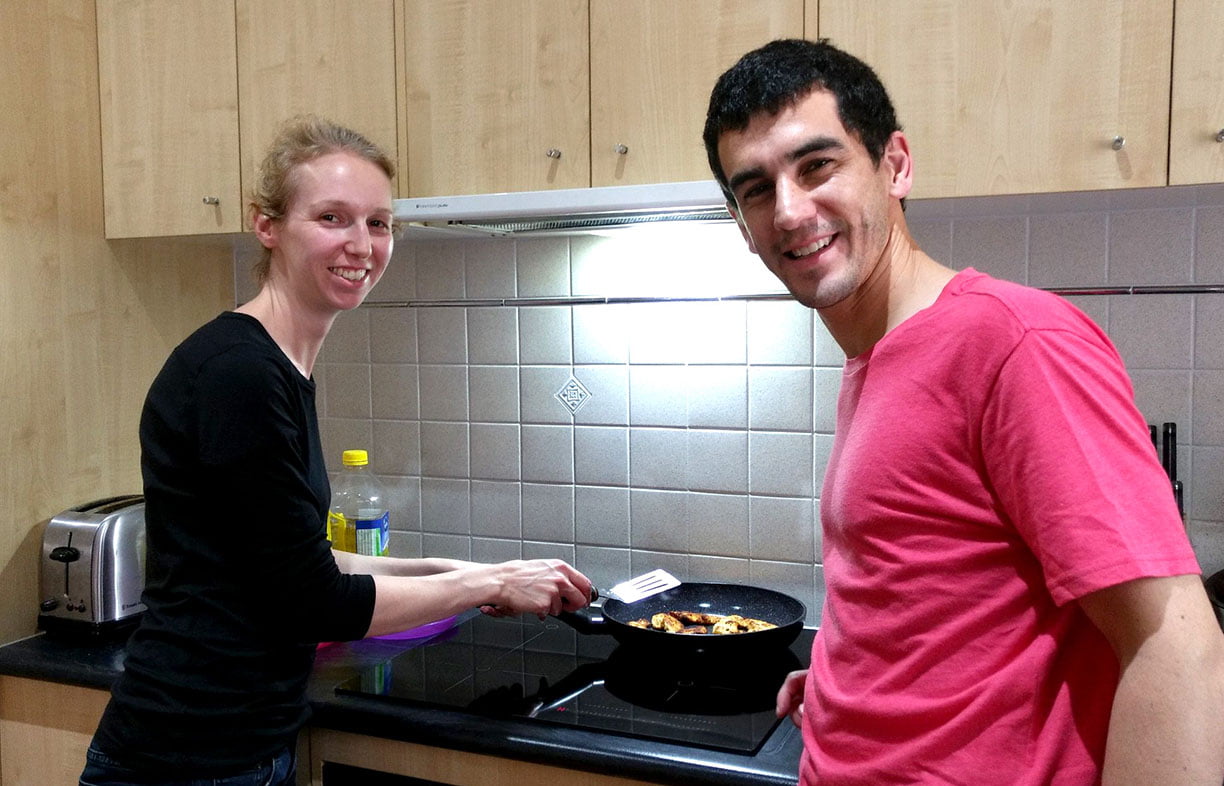
This family of four saved around $250 last winter by heating their home with a reverse-cycle unit instead of their older gas ducted system. They went on to swap out the remaining gas appliances, disconnect gas from their property and save even more. Stephen Zuluaga explains.
In 2012, our family moved to a three-bedroom brick veneer townhouse in the south-eastern suburbs of Melbourne. The house was constructed in 2001 and it’s likely that’s when its original gas ducted heating, water heater and stove were installed.
We’d always been interested in keeping our energy costs down, but, like many people, we just assumed that high gas bills in winter were a part of life. We found that our two-month gas bill spiked significantly in winter due to heating, rising from around $80 in summer up to around $400 in winter.
Then in September 2015 I came across an article on The Conversation which proved to be a turning point. Tim Forcey’s article1 described research undertaken at the Melbourne Energy Institute which suggested that efficient electric appliances—heat pumps—could heat your home more cheaply than gas.
Intrigued, I got in contact with Tim to learn more. He introduced me to the My Efficient Electric Home Facebook group and, through contacts made there, I spoke to many efficiency experts and interested householders like myself about ways to reduce costs and increase efficiency.
In hindsight I can see that I was heading down the path of all-electric, but I wasn’t really looking at it like that at the time: it was just about replacing inefficient appliances with efficient ones.
There are many motives for wanting to improve efficiency and for us the primary driver was financial. Over the course of converting our house to all-electric, I spoke to others who had a combination of environmental, efficiency, financial and technological motives. I really like the fact that no matter what your motive is, you can get an outcome that both lowers costs and reduces environmental impact.
Our house was like so many others
We had some very common gas appliances in our house: household names that have been around since I was a kid. So it was a bit odd starting to seriously call their efficiency and effectiveness into question.
Our gas-fired ducted heating system used underfloor ducting and did an okay job. On many occasions we’d notice parts of the timber floor were warm, suggesting the floor had poor insulation or the ducting was split. Apart from this, the heater had pretty even heat distribution. Beyond running costs, we didn’t have any major problems with it at the time we decided to decommission it.
Our four-burner gas cooktop was pretty standard. In summer if we were using it, the open-plan kitchen and lounge area would heat up a few degrees. We didn’t really have any issues with it, but once we replaced it with an induction cooktop we came to appreciate the features induction offered.
Our gas-fired hot water service was terrible: drawing just a litre of hot water was enough to make it start reheating. It was probably overdue for replacement when we moved in six years ago. Wanting to avoid being forced into making a snap decision when it failed catastrophically, we decided to end its life before it did that itself.
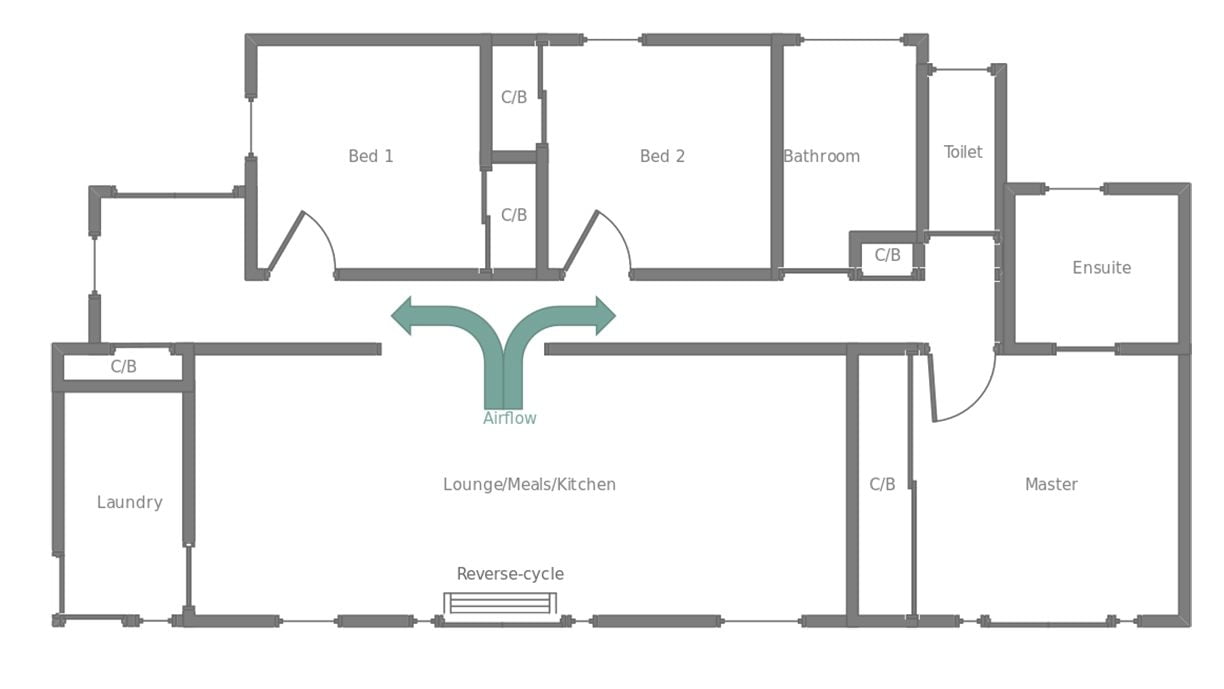
Baby steps: heating comes first
In May 2016, winter was coming and so was our second baby. This meant the likelihood of regular 24/7 heating, bringing with it the threat of huge bills from our gas ducted heating system. So we decided to focus on installing reverse-cycle heating first.
We also decided that if we were going to make capital investments we would aim to get really good operating expense outcomes. Thus, we went for a higher cost but higher efficiency unit—the 3.5 kW Daikin US7 reverse-cycle unit.
We spent a bit of time planning the unit’s location and sizing to ensure a good result. My wife Stacey is much less tolerant of the cold than I am and she’s happy with the heating setup we have now. (However, no amount of high efficiency heating is going to help us negotiate the temperature setting!)
In many cases people will need to buy two or more reverse-cycle units due to house layout and size. Luckily for us, our house layout (see plan) means we can heat the whole house with a single reverse-cycle unit without compromising thermal comfort.
I really like the way the reverse-cycle unit gradually powers up and down as needed, compared to our on/off gas furnace. We find this keeps temperature levels more consistent and means it rarely runs at full power, except on really cold nights or when first turned on.
The living area is the first to heat up which usually takes about 10 minutes from a cold house. Warm air also gets thrown down the corridor to our bedrooms where heating is less critical. This layout results in the living area being about 2 °C to 3 °C warmer than the bedrooms, depending on how cold it is outside.
We had to tune the unit’s settings to get this whole-of-house outcome. The most important changes were turning the fan speed up to the highest and pointing the louvres at the wall opposite. Despite that, the unit only runs the fan at top speed if it’s heating at full power and we find it’s reasonably quiet anyway.
On the coldest of winter days, the unit might take up to two hours to heat the whole house to the desired temperature, but we can set a schedule so that it comes on in advance of when it’s needed. It’s also controllable via the internet—so if plans change we can alter the settings remotely.
A functional kitchen is essential
At the same time as replacing the heater, we decided to look at changing to an induction cooktop. My wife does more cooking than me and, like many others, she thought that induction cooking, being electric, would be slower to heat and might not heat evenly. These were things she wasn’t prepared to accept just to save on running costs.
We bought a $50 single induction cooktop to help us test whether induction would work for us. We were both impressed with how quickly the cookware got hot—it was not only much faster than electric ceramic, but also noticably faster than gas.
The ‘cool’ thing about induction is that the heat is produced within the bottom surface of the cookware instead of coming from a burner below. This means it heats up far more quickly with less wasted heat than when using a flame or electric element. If you flip this around, you’re spending less money on energy that creates unwanted heat in your kitchen.
A major factor with this approach is that only cookware with a ferromagnetic base will work—you can use it if a magnet will stick to the base. So it was doubly important to prove induction cooking worked for us; after all we had some cooking pots that would have to go.
We found there were actually advantages over gas cooking. The $600 induction stove we bought in the end, in November 2016, can heat something very gently, to the point we can slow cook with it, but it can also boil water faster than a kettle if required. With two young kids it’s also quite nice not having to think about carbon monoxide being released into our home from burning gas. The induction stove has a glass top and, because the glass isn’t the source of heat, it doesn’t heat up nearly as much as a ceramic electric or gas burner. Spilt food no longer gets burnt onto the cooking surface and so we’ve found it’s much easier to clean.
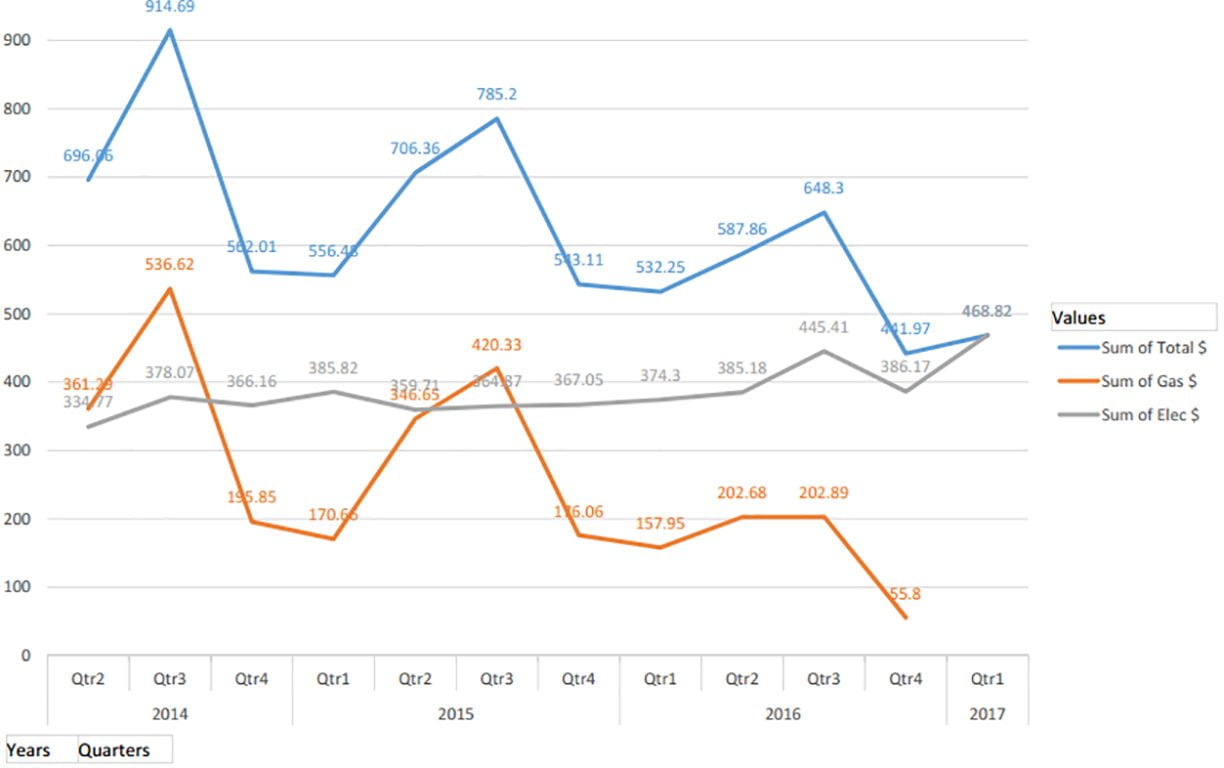
Our gas days were nearing an end
Once we decided we were happy with the induction cooktop, we knew we were ready to remove gas from the house as our water heater was always on the hit-list.
Our new water heater was installed in November 2016. It’s a high efficiency heat pump, which is up to 4.5 times more efficient than a conventional electric element hot water system. It might look a bit odd with its heat pump mounted above, but it’s super efficient, quiet and takes about 15 minutes to heat enough water for a shower.
The water heater has a timer that allows you to restrict when it can heat. I’ve programmed it to operate at night, when tariffs are lowest. I’ll find out this winter what effect cold nights have on its efficiency as it operates by drawing heat out of the ambient air to heat the water. [Ed note: if you have solar PV, you can program a heat pump to run during the day to use the solar power and the warmer daytime temperatures to potentially run more cheaply.]
I was expecting there would be issues with removing the gas meter and fees to fight. I found out there wouldn’t be a fee for my location, but I’d heard all sorts of stories about ongoing fees, so I was getting ready to dig in and fight for my consumer rights if needed. Someone even suggested I tell the retailer that the plumber wanted the meter removed for a renovation project to avoid any removal costs. But I simply informed my retailer that we wanted to disconnect and, when I received my final gas bill, that was the end of it. The distributor removed the meter and capped the remaining pipes.
Consider the whole building
There is no point saving on input energy for heating and cooling if it’s only to float away through poor door sealing or leaky vents. Thus, we have continued to make changes to the building envelope to improve efficiency beyond the move away from gas appliances.
We have a roof-mounted evaporative cooler which we still use as it’s cheaper to run than refrigerative cooling. During winter I fit foam behind the closed louvres in the ceiling vents. This is the cheap expansion foam used in concreting; $12 gave me double what I needed.
We have double-sided foil insulation in the roof cavity attached to the underside of the rafters, mainly to reject heat from hot tiles in the summer, but this also yields some warmth retention in winter.
All our external windows and doors are draught sealed and we don’t heat rooms like the laundry at all. In our living room, we have two sets of large 2.5 m-wide curtains and on top of them is a long sheet of acrylic sheet (perspex) to act as a hidden pelmet. This helps stop the warm air slipping down between the curtains and windows and being cooled.
Sharing some of my lessons
If I was asked about what I’d say to someone who is considering changing out their gas appliances, I’d say “do it.” Of course you’ll have to decide how far through their life your gas appliances are, but you can expect to save money on running costs when you do change.
It cost us $7800 to purchase and install our new heater, hot water system and cooktop: $3600 each for the heater and hot water system, and $600 for the induction cooktop. There were additional costs of about $330 for wiring upgrades (32 A for the cooktop, 16 A for the water heater) and I also did some of the non-electrical installation myself to save costs.
The only difficulty of this whole process was caused by issues with a concrete contractor who never showed up, so I had to install the water heater slab myself. Then the plumber I organised was injured in a road cycling accident. This combination of events caused us to have no hot water for three weeks. Those issues have nothing to do with converting to all-electric, but weeks of cold showers are pretty hard to ignore!
One other thing I’d say is to ensure you get good advice. There is nothing too special about changing a handful of appliances from one fuel source to another, but you’re not just popping in an air conditioner, cooktop and water heater if you want to do it with good energy usage outcomes. Plan it properly and make sure the people you’re dealing with really understand how to achieve the best results as our suppliers did. My most important lesson from this would be to make sure you’re working with experts on energy efficiency—just because someone has put in lots of air conditioners or water heaters does not mean they are knowledgeable about energy efficiency.
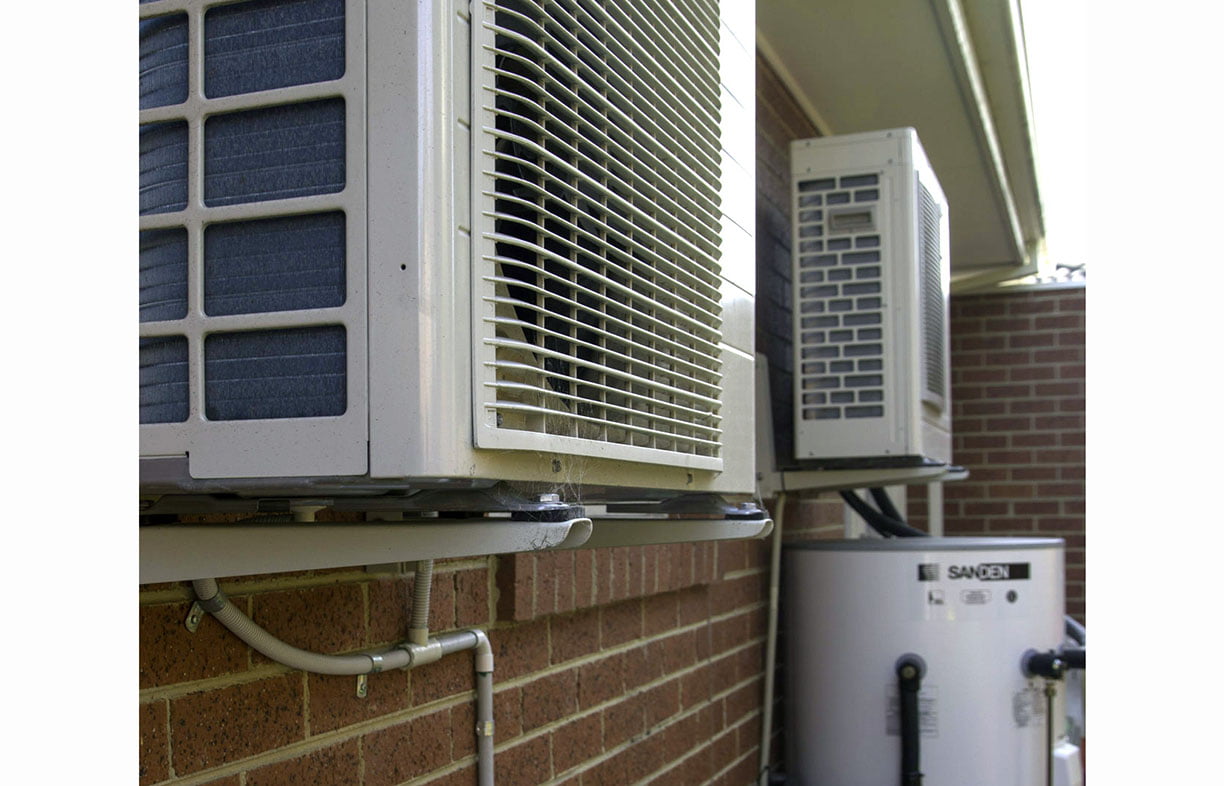
Heating/cooling:
- Daikin US7 heat pump, 3.5 kW cooling (EER 5.15)/5 kW heating (COP 5.05), supplied by Pure Electric
- Brivis Contour whole-house ducted evaporative cooler
- Small pedestal fan for very hot nights and to speed clothes drying in winter
- Toilet exhaust fan with DraftStoppa, bathroom fan ducted to outside
Hot water:
- Sanden heat pump (COP 4.5), 315 L tank, supplied by Pure Electric
Cooking:
- Bosch HBA11B150A oven, well-insulated
- IKEA Smaklig four-zone induction cooktop
House features:
- Living spaces face east, most bedrooms west; eaves all around
- Existing batt insulation in walls and ceiling; double-sided foil insulation on underside of rafters
- Draught sealing applied to all external doors and windows
- Backed roller blinds and backed drapes (with hidden pelmet)
- LED downlights and some CFL lights.
Related articles
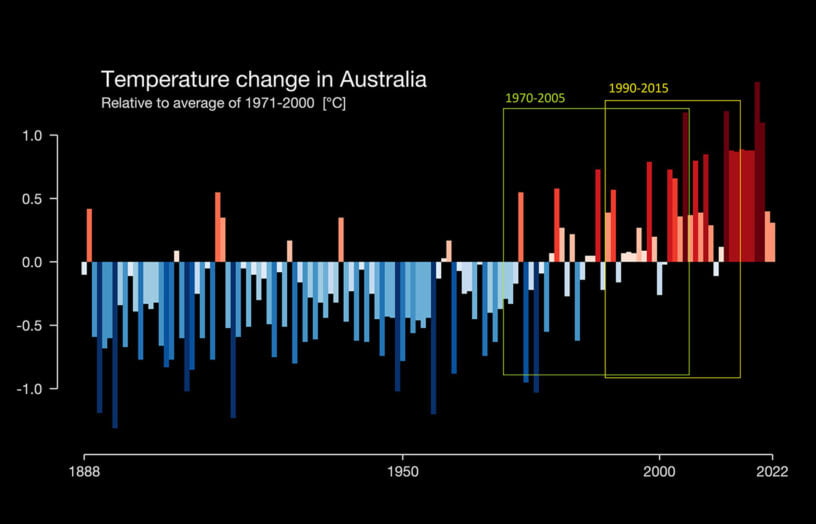 Efficient homes
Efficient homes
Building for a changing climate
Are we building homes for the future, or for the past? Rob McLeod investigates how climate change is impacting home energy ratings and the way we build our homes.
Read more Efficient homes
Efficient homes
Gas and our health
Dr Ben Ewald uncovers the health effects of gas in the home.
Read more Efficient homes
Efficient homes
Getting off gas FAQs
Do heat pumps work well in Australian conditions? Rachel Goldlust explains.
Read more
